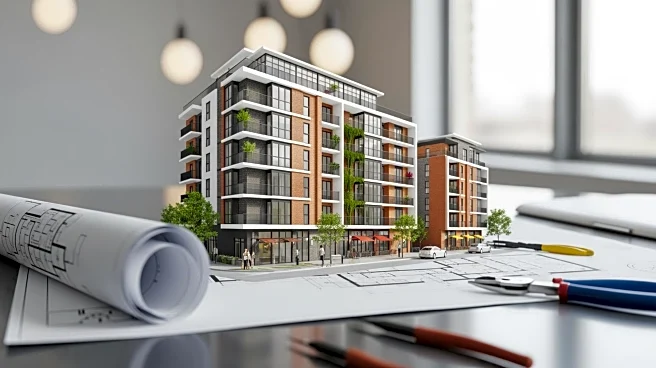What's Happening?
Recent data from market analyst Glenigan indicates a decline in construction activity over the past three months, with project starts falling by 8 percent. This downturn is part of a broader trend, as starts in the three months to October were 10 percent below
2024 levels. The residential sector experienced a 7 percent drop in starts, largely due to delays caused by the Building Safety Regulator (BSR). Despite these challenges, the office construction sector has shown resilience, with starts increasing by 16 percent compared to the previous three months and up 91 percent from last year. This growth is attributed to new projects like the £37.5m Wells House office development in Bromley, London, and other initiatives. The civils sector also saw a modest increase in starts, driven by infrastructure projects.
Why It's Important?
The decline in construction activity, particularly in the residential sector, highlights ongoing challenges in the industry, including regulatory delays and economic pressures. The government's commitment to addressing the BSR backlog by the new year is crucial for revitalizing private housing starts. Meanwhile, the growth in office construction suggests a shift in investment priorities, potentially reflecting changes in work patterns and demand for office space post-pandemic. This trend could influence urban development and economic recovery strategies, impacting stakeholders such as developers, investors, and local governments.
What's Next?
The government's efforts to resolve the BSR backlog could lead to increased activity in the residential sector, potentially boosting private housing starts. Additionally, the anticipated increase in capital funding for health, education, and community projects from next April may stimulate growth in these sectors. Stakeholders will be closely monitoring these developments, as they could significantly impact construction industry dynamics and economic recovery efforts.
Beyond the Headlines
The sustained growth in office construction may reflect broader shifts in workplace culture and real estate strategies, as companies adapt to hybrid work models and seek modern, flexible office spaces. This could lead to long-term changes in urban planning and development, influencing how cities evolve to accommodate new business needs and employee preferences.













